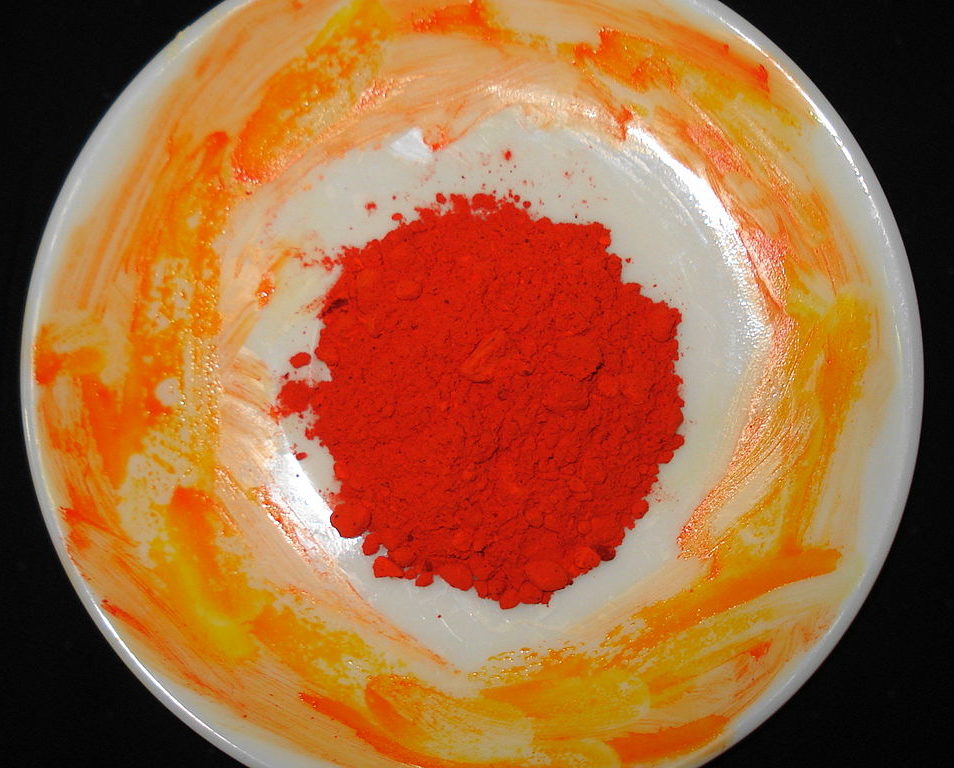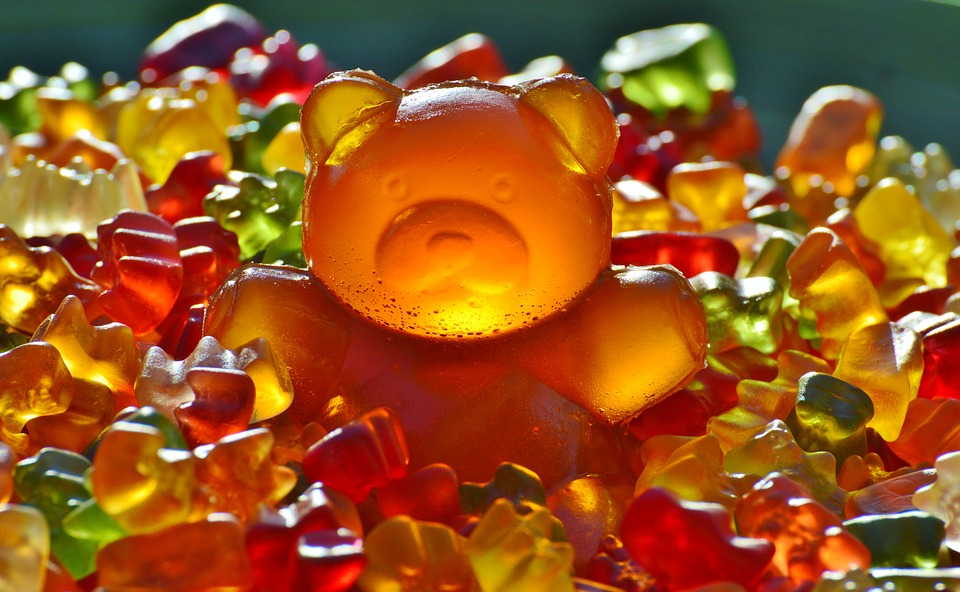Additives are added to most foods we consume today. These additives perform various functions. Some affect the taste and color of food; others affect the shelf life of the product. All additives have their E-number and have to be listed on the packaging of the product.
Children with attention deficit hyperactivity disorder (ADHD) should be avoided eating food with some of E-numbers. In addition to ADHD, there are other side effects of some additives:
E110 – Sunset yellow
- Possible health effects: ADHD, carcinogenic effects, allergen, nausea, severe weight loss, and vomiting.
- Where found: mustard, jelly, marzipan, jams, soup, sauces and tinned fish, bakery products, sweets, ice cream, soft drinks.
- Made of: There is not much information about the production process of this dye, previously coal tar was used as a raw material.
- Where banned: Norway.

E110 – sunset yellow
E102 – Tartazine
- Possible health effects: ADHD, allergic reactions, including asthma attacks.
- Where found: soups, custard powder, mustard, marmalade, jelly, marzipan, ice lollies, and fizzy drinks. squash, fruit juice, chocolate, tinned fruit, tinned sauces, spice.
- Made of: E102 is yellow food coloring powder is obtained synthetically from coal tar.
- Where banned: Austria and Norway.
E122 – Carmoisine
- Possible health effects: ADHD, allergic reactions.
- Where found: jelly, jam, sweets, flavored yoghurts, marzipan, packet soup and blancmange.
- Made of: E122is a red, synthetic food coloring from coal tar.
- Where banned: America, Norway, Japan and Sweden.

E124 – Ponceau 4R / cochineal red
- Possible health effects: ADHD.
- Where found: all sorts of products, including jelly, soups, packet cake mixes, tinned fruits, dessert topping and salami.
- Made of: E124is a synthetic coal tar and azo dye that turns food products bright red.
- Where banned: America and Norway.
E129 – Allura red
- Possible health effects: ADHD, allergic reactions; carcinogenicity has been demonstrated in animals.
- Where found: sweets, fizzy drinks, salami, dessert, pet food, cosmetics, medicines, shampoo.
- Made of: E129 is synthetic coal tar and petroleum The p-credine compound is used for production.
- Where banned: many other countries, including Belgium, France, Germany, Sweden, Austria and Norway.

E104 – Quinoline yellow
- Possible health effects: ADHD, dermatitis.
- Where found: scotch eggs, smoked haddock, ice cream; cosmetics such as hair products, lipsticks and perfumes.
- Made of: E104 is a green-yellow dye produced synthetically by distillation of coal tar, bones, alkaloids, or by reaction of acetaldehyde with acetaldehyde or formaldehyde.
- Where banned: in many other countries, including Australia, America, Japan and Norway.
E211 – Sodium benzoate
- Possible health effects: ADHD, allergic reactions, asthma, it damage the DNA structure and thus cause some hereditary diseases (eg Parkinson’s disease).
- Where found: soft drinks, margarine, salad dressing, soya sauce, sweets, some sauces, cucumbers, fruit juice, jam, cheese, fruit salads, packaged cod; shampoo, deodorant, skin cream with pH less than 4.
- Made of: E211 is a preservative produced by a chemical process – neutralization of benzoic acid (produced by oxidation of toluene) with sodium hydroxide.
- Where banned: nowhere.
To avoid the consumption of dyes and other harmful additives, we need to know the harmful E-numbers and carefully read the composition of the everyday products we buy.
Sources: http://www.exploreenumbers.co.uk/Dangers-and-Side-Effects-of-E-Numbers.html, https://www.ivyroses.com/Define/E110, https://www.facebook.com/568398923176633/posts/1511365002213349/ commons.wikipedia.org, pixabay.com















